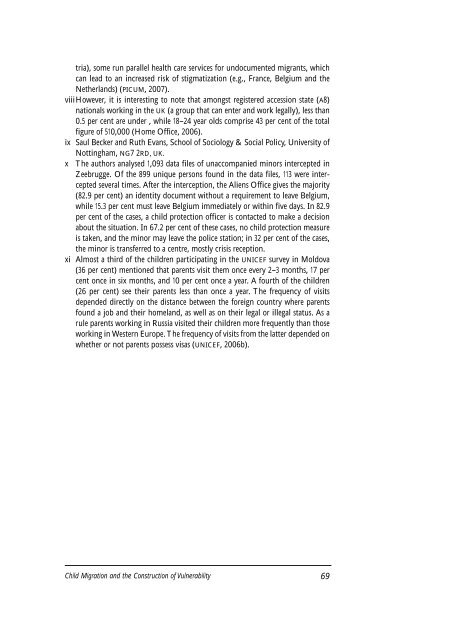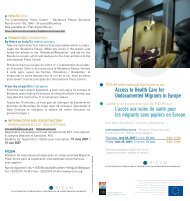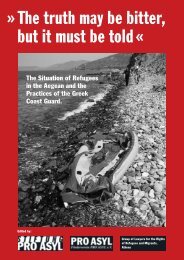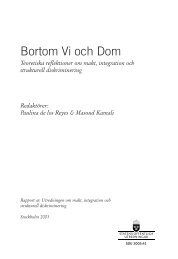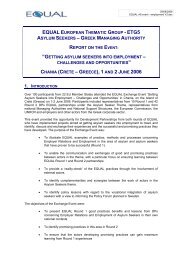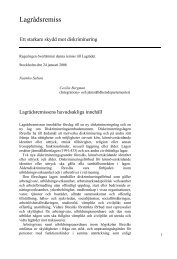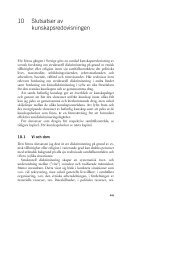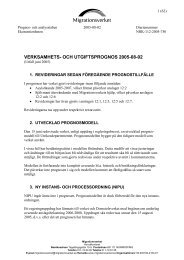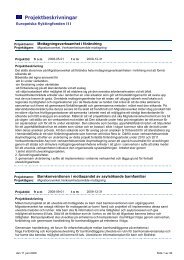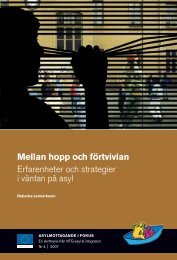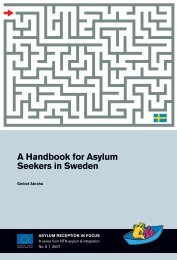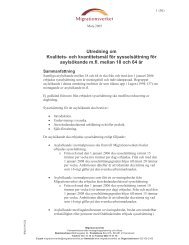and the Construction of Vulnerability - Child Trafficking
and the Construction of Vulnerability - Child Trafficking
and the Construction of Vulnerability - Child Trafficking
Create successful ePaper yourself
Turn your PDF publications into a flip-book with our unique Google optimized e-Paper software.
tria), some run parallel health care services for undocumented migrants, which<br />
can lead to an increased risk <strong>of</strong> stigmatization (e.g., France, Belgium <strong>and</strong> <strong>the</strong><br />
Ne<strong>the</strong>rl<strong>and</strong>s) (PICUM, 2007).<br />
viiiHowever, it is interesting to note that amongst registered accession state (A8)<br />
nationals working in <strong>the</strong> UK (a group that can enter <strong>and</strong> work legally), less than<br />
0.5 per cent are under , while 18–24 year olds comprise 43 per cent <strong>of</strong> <strong>the</strong> total<br />
figure <strong>of</strong> 510,000 (Home Office, 2006).<br />
ix Saul Becker <strong>and</strong> Ruth Evans, School <strong>of</strong> Sociology & Social Policy, University <strong>of</strong><br />
Nottingham, NG7 2RD, UK.<br />
x The authors analysed 1,093 data files <strong>of</strong> unaccompanied minors intercepted in<br />
Zeebrugge. Of <strong>the</strong> 899 unique persons found in <strong>the</strong> data files, 113 were intercepted<br />
several times. After <strong>the</strong> interception, <strong>the</strong> Aliens Office gives <strong>the</strong> majority<br />
(82.9 per cent) an identity document without a requirement to leave Belgium,<br />
while 15.3 per cent must leave Belgium immediately or within five days. In 82.9<br />
per cent <strong>of</strong> <strong>the</strong> cases, a child protection <strong>of</strong>ficer is contacted to make a decision<br />
about <strong>the</strong> situation. In 67.2 per cent <strong>of</strong> <strong>the</strong>se cases, no child protection measure<br />
is taken, <strong>and</strong> <strong>the</strong> minor may leave <strong>the</strong> police station; in 32 per cent <strong>of</strong> <strong>the</strong> cases,<br />
<strong>the</strong> minor is transferred to a centre, mostly crisis reception.<br />
xi Almost a third <strong>of</strong> <strong>the</strong> children participating in <strong>the</strong> UNICEF survey in Moldova<br />
(36 per cent) mentioned that parents visit <strong>the</strong>m once every 2–3 months, 17 per<br />
cent once in six months, <strong>and</strong> 10 per cent once a year. A fourth <strong>of</strong> <strong>the</strong> children<br />
(26 per cent) see <strong>the</strong>ir parents less than once a year. The frequency <strong>of</strong> visits<br />
depended directly on <strong>the</strong> distance between <strong>the</strong> foreign country where parents<br />
found a job <strong>and</strong> <strong>the</strong>ir homel<strong>and</strong>, as well as on <strong>the</strong>ir legal or illegal status. As a<br />
rule parents working in Russia visited <strong>the</strong>ir children more frequently than those<br />
working in Western Europe. The frequency <strong>of</strong> visits from <strong>the</strong> latter depended on<br />
whe<strong>the</strong>r or not parents possess visas (UNICEF, 2006b).<br />
<strong>Child</strong> Migration <strong>and</strong> <strong>the</strong> <strong>Construction</strong> <strong>of</strong> <strong>Vulnerability</strong><br />
69


